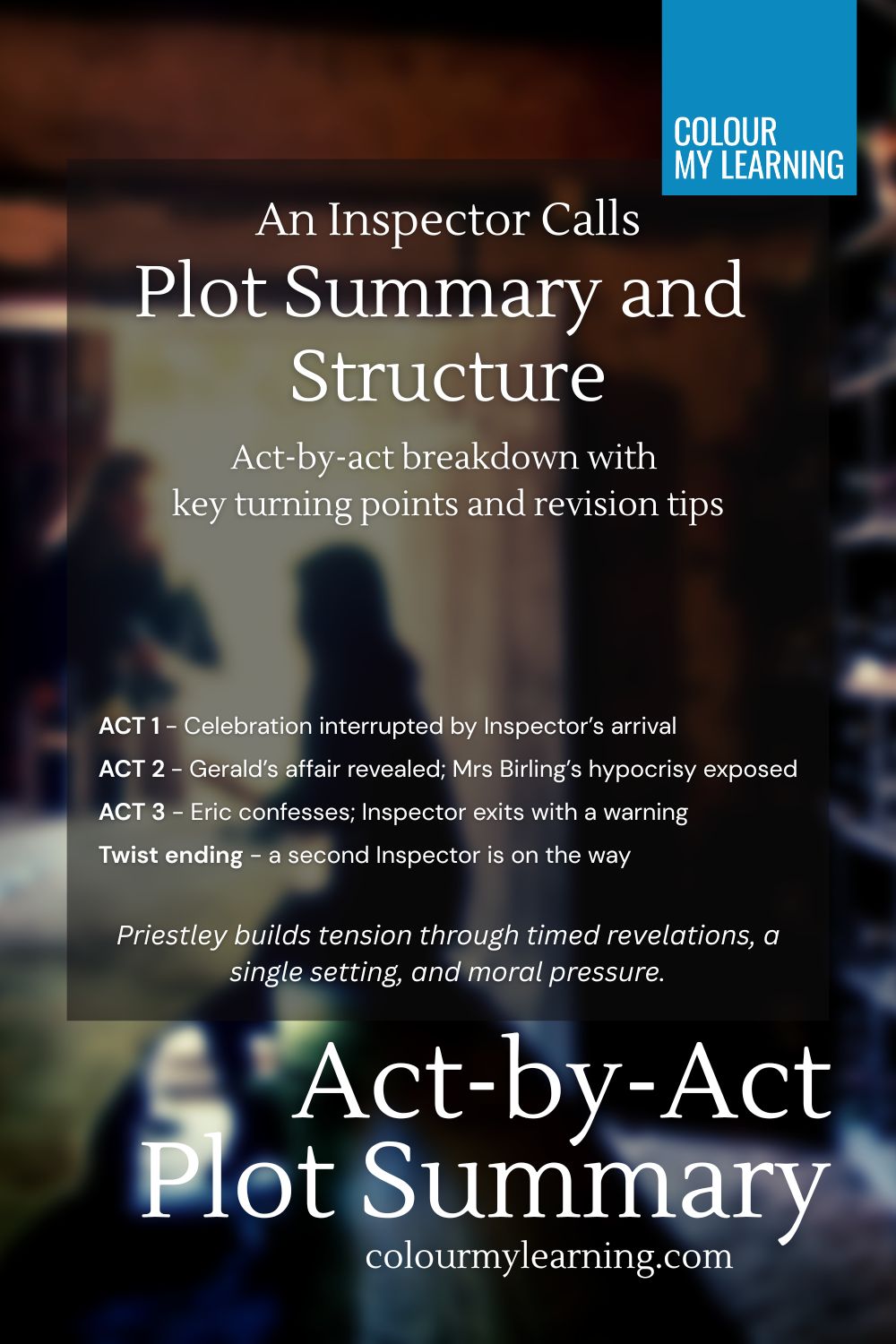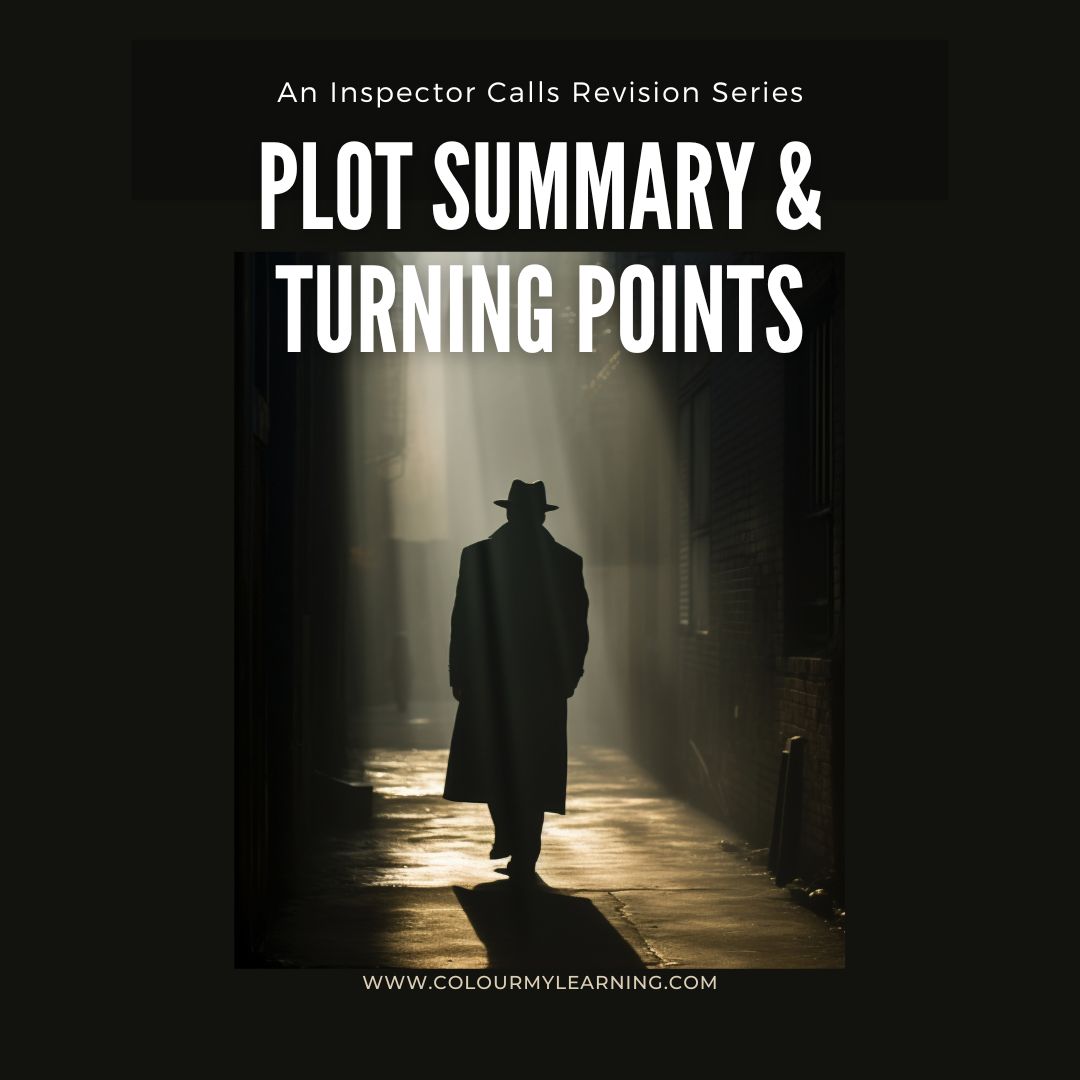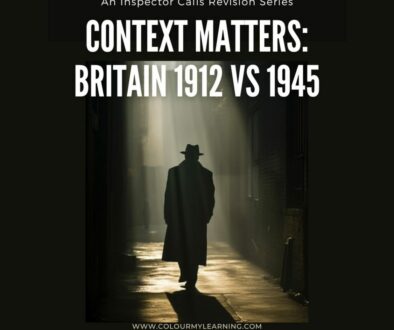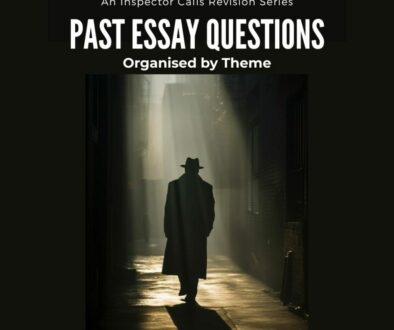An Inspector Calls Plot Summary and Key Turning Points
An Inspector Calls is often described as a detective drama, but at its core, it’s a powerful piece of political theatre. Written by J.B. Priestley in 1945 and set just before the First World War, the play examines class, responsibility, and social change through a carefully structured sequence of revelations. Understanding the plot — not just what happens, but when and why — can help you write more effectively about the play’s message, characters, and dramatic techniques.
This summary provides an overview of the play’s three acts and highlights the key turning points that shape the story. Knowing these moments will help you link events to character development, theme, and the wider context Priestley wanted his audience to consider.

Act 1: Celebration and Disruption
The play opens with the Birling family enjoying a celebratory dinner to mark the engagement of Sheila Birling to Gerald Croft. The mood is warm and confident, particularly as Mr Birling delivers self-important speeches about business, progress, and the future. He confidently claims that war is unlikely and the Titanic is unsinkable — examples of dramatic irony that immediately position him as out of touch with reality.
This mood changes sharply with the arrival of Inspector Goole. He announces that a young woman, Eva Smith, has died by suicide, and begins to question each member of the family. Mr Birling admits to sacking Eva from his factory, and Sheila confesses to having her fired from a shop out of jealousy. The celebration unravels quickly, and the first act ends with a growing sense of unease.
The Inspector’s arrival marks the play’s first major turning point. From this moment, the tone shifts from light-hearted to morally charged, and each character’s actions begin to be scrutinised.
Act 2: Confessions and Consequences
Act 2 deepens the tension as Gerald admits to having had an affair with Eva, who was then using the name Daisy Renton. Although he claims to have helped her, the relationship ended with her being cast aside once again. Sheila, now visibly changed, becomes more thoughtful and assertive. She breaks off the engagement and supports the Inspector’s line of questioning.
Attention then turns to Mrs Birling, who reveals that she refused Eva help at her charitable organisation because she considered her “impertinent.” In a moment of bitter dramatic irony, she blames the unnamed father of Eva’s child for her situation, insisting he should be held fully responsible — unaware that the father is her own son.
This moment is a second turning point in the play, exposing not only Mrs Birling’s hypocrisy but the deep personal and social failings within the family. It also raises the stakes, as the audience realises Eric is more involved than anyone suspected.
Act 3: Collapse and Consequence
In Act 3, Eric enters and confirms everything the audience has been led to suspect. He had a relationship with Eva, stole money to support her, and deeply regrets his actions. The emotional intensity of his confession contrasts with the cold defences offered by his parents.
The Inspector’s final speech is one of the most memorable in the play. He warns that if people do not learn the lesson of responsibility, “they will be taught it in fire and blood and anguish.” He leaves the family — and the audience — with a clear moral challenge.
After he exits, the Birlings try to recover their composure. Gerald suggests that the Inspector might not have been real, and soon the older generation begins to question the whole evening. Just as they start to dismiss the experience, the phone rings. A police inspector is on his way to question them about a girl’s death.
This final twist is the play’s third and most powerful turning point. It reaffirms Priestley’s message that moral consequences cannot be avoided — and that denial and complacency will not protect those who refuse to change.
Who Is Eva Smith and Why Is She Important?
Although Eva Smith never appears on stage, she is the most important character in the play. Through her story — pieced together from the Birlings’ and Gerald’s actions — Priestley reveals how society treats the vulnerable. Eva represents not just one woman, but the millions who suffer silently. Each character’s connection to her becomes a moral test, and the audience is left to judge how far each of them — and perhaps ourselves — is responsible.

Why Understanding the Structure Helps
The structure of An Inspector Calls is tightly controlled. Priestley uses real-time action, a single setting, and carefully timed entrances and exits to build tension. Each act ends with a key revelation or interruption, which not only drives the plot forward but keeps the audience engaged and morally alert.
Priestley’s use of dramatic entrances, timed revelations, and pauses helps to control how the audience reacts and when. These structural choices serve a moral and emotional purpose, building tension and prompting reflection. Recognising this makes it easier to write confidently about AO2 in the exam.
As you are preparing for exams, recognising these turning points is especially useful when writing about dramatic tension, character development, or how Priestley constructs meaning. Linking structure to theme — particularly responsibility, guilt, and social class — can strengthen your AO2 marks and show a deeper understanding of the play as a crafted piece of drama.
See how well you can identify the core and extended elements of the play in past year exam questions. Take a look at the full compilation of Past Exam Questions An Inspector Calls here.
Go Further with the Full Revision Guide
If you found this summary helpful, our An Inspector Calls Revision Guide (found on our Inspector Calls Resources Page) offers a full act-by-act breakdown with detailed commentary on language, form, and structure. It includes exam-style questions, planning tips, and tools to help you write confident, focused responses — all tailored to the Edexcel IGCSE English Literature specification.











